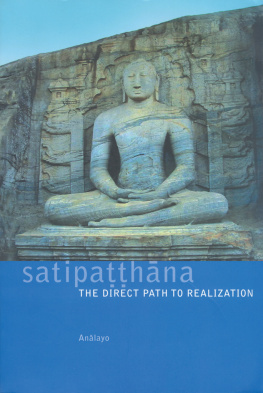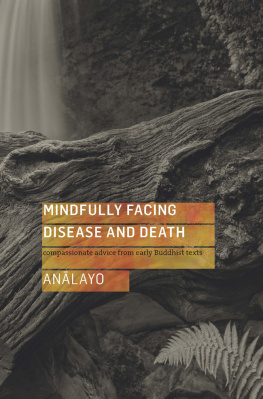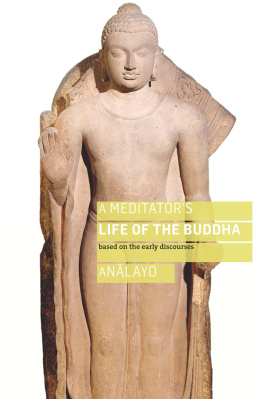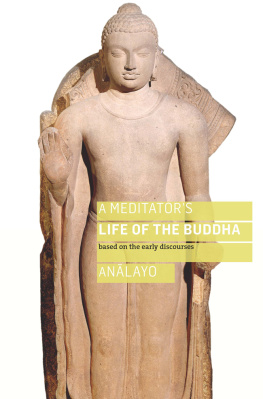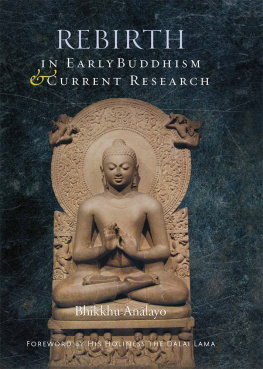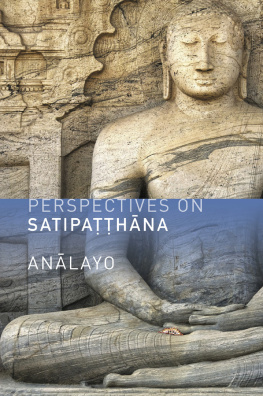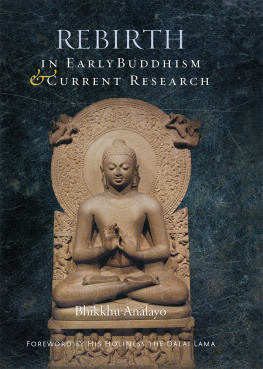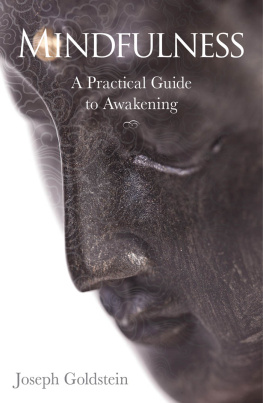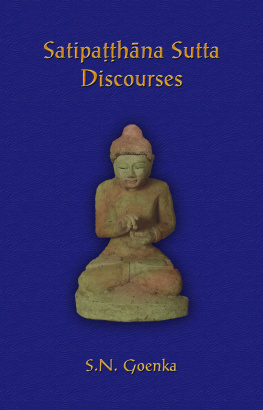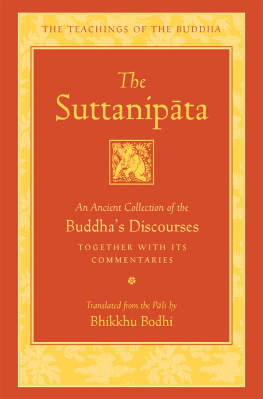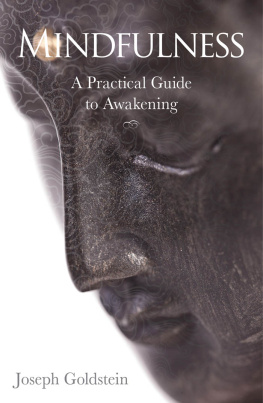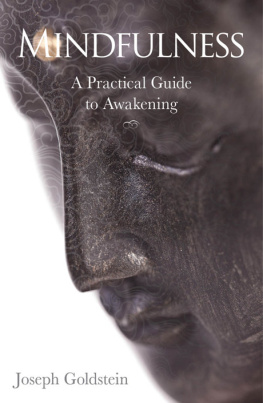This book helps to fill what has long been a glaring gap in the scholarship on Early Buddhism, offering us a detailed textual study of the Satipahna Sutta, the foundational Buddhist discourse on meditation practice. With painstaking thoroughness, Ven. Anlayo marshals the suttas of the Pli canon, works of modern scholarship, and the teachings of present-day meditation masters to make the rich implications of this text, so concise in the original, clear to contemporary students of the Dharma. Unlike more popular books on the subject, he is not out to establish the exclusive validity of one particular system of meditation as against others; his aim, rather, is to explore the sutta as a wide-ranging and multi-faceted source of guidance which allows for alternative interpretations and approaches to practice. His analysis combines the detached objectivity of the academic scholar with the engaged concern of the practitioner for whom meditation is a way of life rather than just a subject of study. The book should prove to be of value both to scholars of Early Buddhism and to serious meditators alike. Ideally, it will encourage in both types of reader the same wholesome synthesis of scholarship and practice that underlies the authors own treatment of his subject.
Bhikkhu Bodhi, scholar and translator
This book explains in detail the full meaning of the entire body of teaching given in this discourse. I believe this commentary by Anlayo on this root text surpasses all previous commentaries in the Theravda tradition over the past 2,000 years. Anlayo has written an indispensable guide to enable students of the Buddhas teachings to understand this celebrated talk. His book reads like a practice manual for meditators in daily life.
It is surely destined to become the classic commentary on the Satipahna. It will also inspire readers interested in the Buddhist tradition to develop such down-to-earth practices for their own realization.
Christopher Titmuss,writer and co-founder of Gaia House meditation centre
Ven. Anlayo has produced a very thorough and comprehensive study of the Buddhas discourse on satipahna. It is to be recommended not only for the way in which it examines these instructions in meditation in the context of the early discourses and in relation to the traditional interpretations of the Pli commentaries, but also for the way in which it encompasses the observations and interpretations of both modern scholars of Buddhism and teachers of meditation. For anyone interested in the theory and practice of satipahna meditation this is a most valuable guide.
Rupert Gethin,Senior Lecturer on Indian Religions at the University of Bristol
SATIPAHNA
Published by
Windhorse Publications
169 Mill Road
Cambridge
CB1 3AN
www.windhorsepublications.com
Anlayo 2003
Reprinted 2006, 2008, 2010, 2012.
Electronic edition 2013
Cover photo Theodor Franz Steffens
Cover design Marlene Eltschig
British Library Cataloguing in Publication Data:
A catalogue record for this book is available from the British Library
Paperback ISBN: 9781 899579 54 9
ebook ISBN: 978-1-907314-47-6
The right of Anlayo to be identified as the author of this work has been asserted by him in accordance with the Copyright, Designs and Patents Act 1988
A Windhorse Publications ebook
Windhorse Publications would be pleased to hear about your reading experiences with this ebook at
References to Internet web sites (URLs) were accurate at the time of writing. Neither the author nor Windhorse Publications is responsible for URLs that may have expired or changed since the manuscript was prepared.
As an act of Dhammadna, Anlayo has waived royalty payments from this book.
LIST OF FIGURES
Ven. Anlayo was born in 1962 in Germany, was ordained in 1995 in Sri Lanka, and completed his PhD on satipahna at the University of Peradeniya in 2000. At present he is mainly engaged in the practice of meditation, and among other things contributes to the Encyclopaedia of Buddhism.
ACKNOWLEDGEMENTS
Little of the present work would have come about without the generous support that I received from my parents, K. R. and T. F. Steffens. I am also much indebted to Muni Bhikkhu, Bhikkhu Bodhi, ananda Bhikkhu, Guttasla Bhikkhu, aramita Bhikkhu, Ajahn Vipass, Dhammajva Bhikkhu, Brahmli Bhikkhu, nandajoti Bhikkhu, Anagrika Santuho, Prof. Lily de Silva, Prof. P. D. Premasiri, Godwin Samararatne, Dhammacri Vishvapani, Michael Drummond, and Andrew Quernmore for suggestions, corrections, inspiration, and criticism. Any shortcomings or misrepresentations are entirely down to my own insufficient level of meditative practice and theoretical understanding.
Jhyatha, m pamdattha,
m pacch vippaisrino ahuvattha!
Meditate, dont be negligent,
lest you may later regret it!
INTRODUCTION
The present work, which is the combined outcome of my Ph.D. research at the University of Peradeniya in Sri Lanka and my own practical experience as a meditating monk, attempts a detailed exploration of the significance and the practice of mindfulness meditation according to its exposition in the Satipahna Sutta, and placed within its early Buddhist canonical and philosophical context.
Mindfulness and the proper way of putting it into practice are certainly topics of central relevance for anyone keen to tread the Buddhas path to liberation. Yet for a proper understanding and implementation of mindfulness meditation the original instructions by the Buddha on satipahna need to be taken into consideration. In view of this, my inquiry is in particular concerned with the discourses recorded in the four main Nikyas and the historically early parts of the fifth Nikya as centrally important source material.
Satipahna is a matter of practice. In order to ensure that my exploration has practical relevance, I have consulted a selection of modern meditation manuals and related publications. The nature of this selection has been mainly a matter of availability, yet I hope to have included a fairly representative number of meditation teachers. Apart from these, I have also relied on various academic monographs and articles on early Buddhism in order to illustrate the philosophical framework and historical context within which the Satipahna Sutta is to be understood. These provide the background information for understanding particular passages or expressions in the discourse.
To help maintain text flow and readability, I have kept the main body of the text as free as possible from direct quotations and tangential observations. Instead, I have made extensive use of footnotes, which provide references of interest and discussions of additional information. The general reader may prefer to focus on the body of the text during a first reading, and only turn to the information in the footnotes during a second reading.
My exposition follows the sequence of the passages in the discourse as closely as possible. At the same time, however, my treatment is not restricted to simple comments, but allows for minor digressions in order to explore relevant points and to provide a background for better understanding the section under discussion.
The first chapter deals with general aspects and terminology in relation to satipahna. The next three chapters are concerned with the second paragraph of the
Next page
